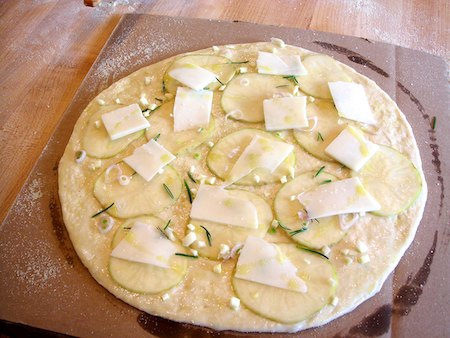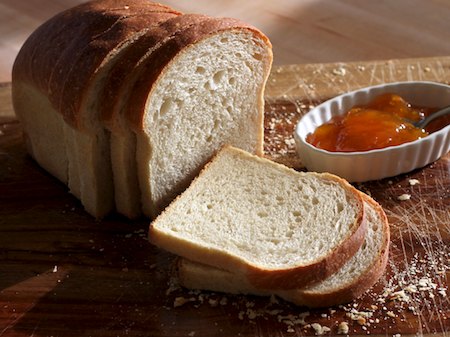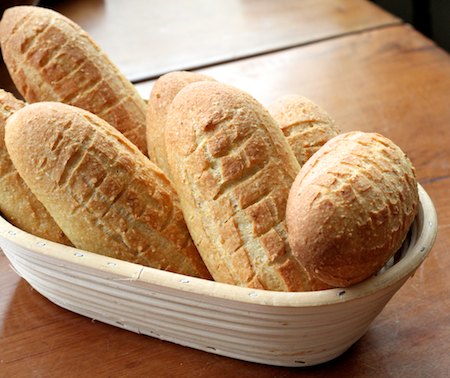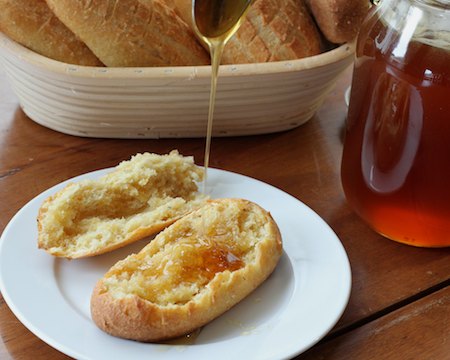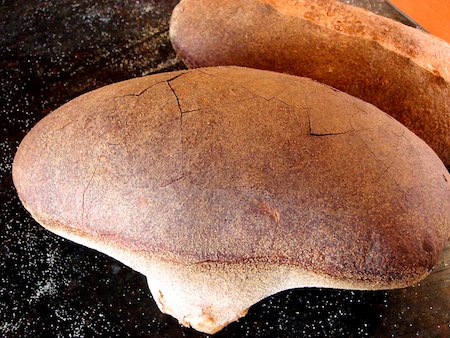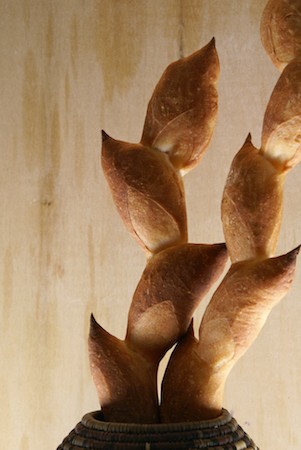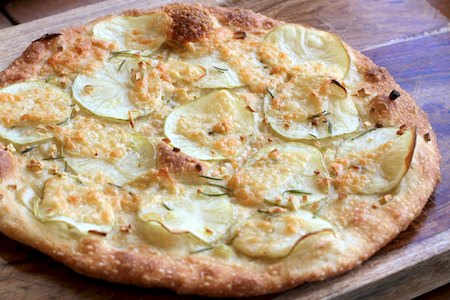
If you have space for a countertop oven, I highly recommend one. It can replace your toaster, but a good-sized one can also do most of the things your regular oven can do — roast your chicken, broil your fish, bake your cookies, toast your nuts — using only a fraction of the energy of your big oven.
And if you have a baking stone, you can even bake a loaf of bread, or a pizza sized just right for one or two people.
I adored my Cuisinart Brick Oven when it worked, but after I had two of them quit on me in the space of three years (the top element died in one, the door spring in the other) it was time for a change. The Breville Smart Oven came to live here a few weeks ago, and the first hoop I had it jump through, other than toasting bagels (at which it performs marvelously, by the way) was my favorite white pizza — potatoes with rosemary and garlic.
For pizza, the hotter the oven the better, and a stone is essential for a crisp crust. The Cuisinart oven went up to 500F, but most countertop ovens, including the Breville, max out at 450F. Even so, I still got a pretty nice pizza, on the stone I saved from the defunct Cuisinart. Preheating the oven/stone for at 30 minutes gets the stone good and hot; skimp on this step and you risk an underdone crust.
Then there’s the question of how to get the pizza onto the stone in one piece. My regular peels are too big for the little oven, and my giant spatula is too small for a 10-inch pizza. Corrugated cardboard to the rescue! I cut a piece just wide enough to fit into the oven cavity. After rolling the crust out on the counter, I dusted my homemade peel generously with a mixture of white and semolina flours, and assembled the pizza on it. It slid off and onto the stone like a charm.
